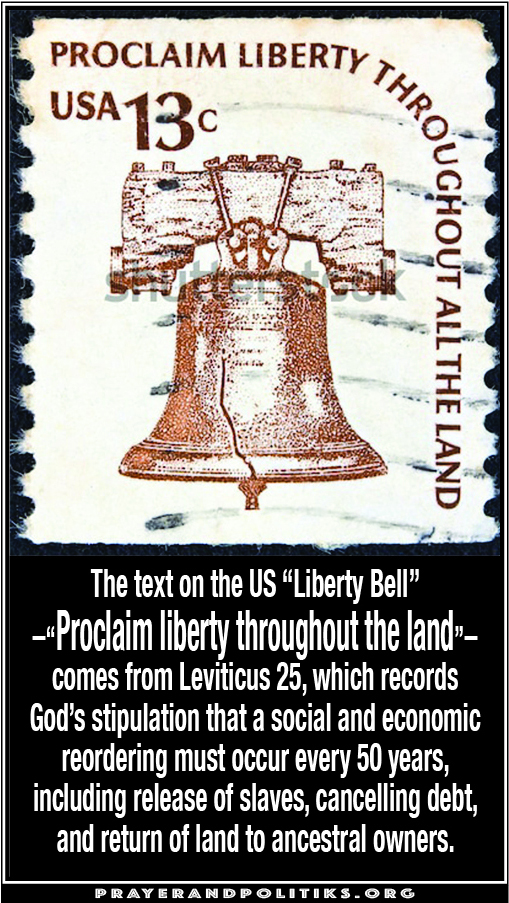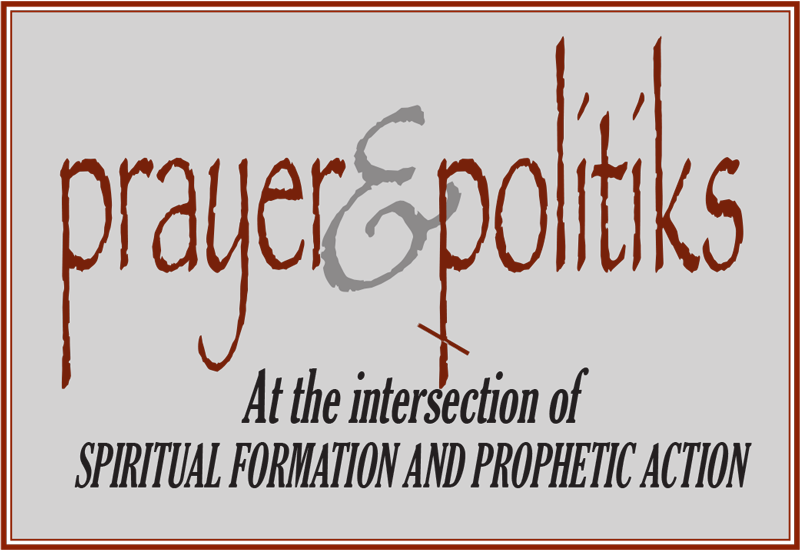by Ken Sehested
There are four great ironies behind the “Liberty Bell,” associated with the founding convictions of the United States of America and inscribed with the phrase “Proclaim Liberty throughout the land and unto the inhabitants thereof.” The reference, from Leviticus 25:10, is a text that stipulates profound social renewal as part of God’s  covenant with the Hebrew people, requiring the forgiveness of debt, reclamation of ancestral lands and the release of slaves every 50 years.
covenant with the Hebrew people, requiring the forgiveness of debt, reclamation of ancestral lands and the release of slaves every 50 years.
In the first instance, the colonial Pennsylvania Assembly ordered the bell in 1751 to commemorate the 50-year anniversary of William Penn's 1701 Charter of Privileges, Pennsylvania's original Constitution, which contains Penn's far-reaching ideas on religious freedom, his liberal stance on Native American rights, and his inclusion of citizens in enacting laws.
The second great irony was the bell’s tolling announcing the opening of the first Continental Congress in 1774 was preface to the nation-building policies that enshrined slavery as a legal form of commerce, beginning a long history of political ideals being trumped by the lure of commercial gain.
A third irony is that the bell, originally referred to as the “State House Bell” and “Independence Bell,” did not assume its current name until 1837 when it was adopted by the American Anti-Slavery Society as a symbol of the abolitionist movement.
Finally, though it was recast twice, continued to crack, finally becoming inoperative after ringing to celebrate George Washington’s birthday in late February 1846—just two months before the outbreak of the Mexican-American War. In the war’s aftermath, Mexico ceded more than half its land to the US—Texas and present-day states of California, Nevada, Utah, New Mexico, most of Arizona and Colorado, parts of Oklahoma, Kansas and Wyoming, at a cost of $0.0000256 per acre—representing a major advance in US “manifest destiny” land grabs.
The phrase “manifest destiny” was first used in 1845 by newspaper editor John O’Sullivan advocating for the annexation of Texas. However, the phrase’s precedence can be traced back as far as 1616 when an English colonization agent told his audience about this wonderful land, concluding “What need wee then to feare, but to goe up at once as a peculiar people marked and chosen by the finger of God to possess it?”*
The idea has always been a contested one, and even its proponents understood it differently. Some assumed such destiny would be powered by moral suasion, as an example to be replicated; others inferred it as authority for direct intervention.
# # #
*Quoted in A. Stephanson, Manifest Destiny: American Expansion and the Empire of Right (Canada: HarperCollins Canada Ltd, 1995), xii.
©Ken Sehested @ prayerandpolitiks.org

